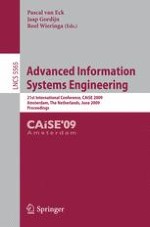This book constitutes the refereed proceedings of the 21st International Conference on Advanced Information Systems Engineering, CAiSE 2009, held in Amsterdam, The Netherlands, on June 8-12, 2009. The 36 papers presented in this book together with 6 keynote papers were carefully reviewed and selected from 230 submissions. The topics covered are model driven engineering, conceptual modeling, quality and data integration, goal-oriented requirements engineering, requirements and architecture, service orientation, Web service orchestration, value-driven modeling, workflow, business process modeling, and requirements engineering.
